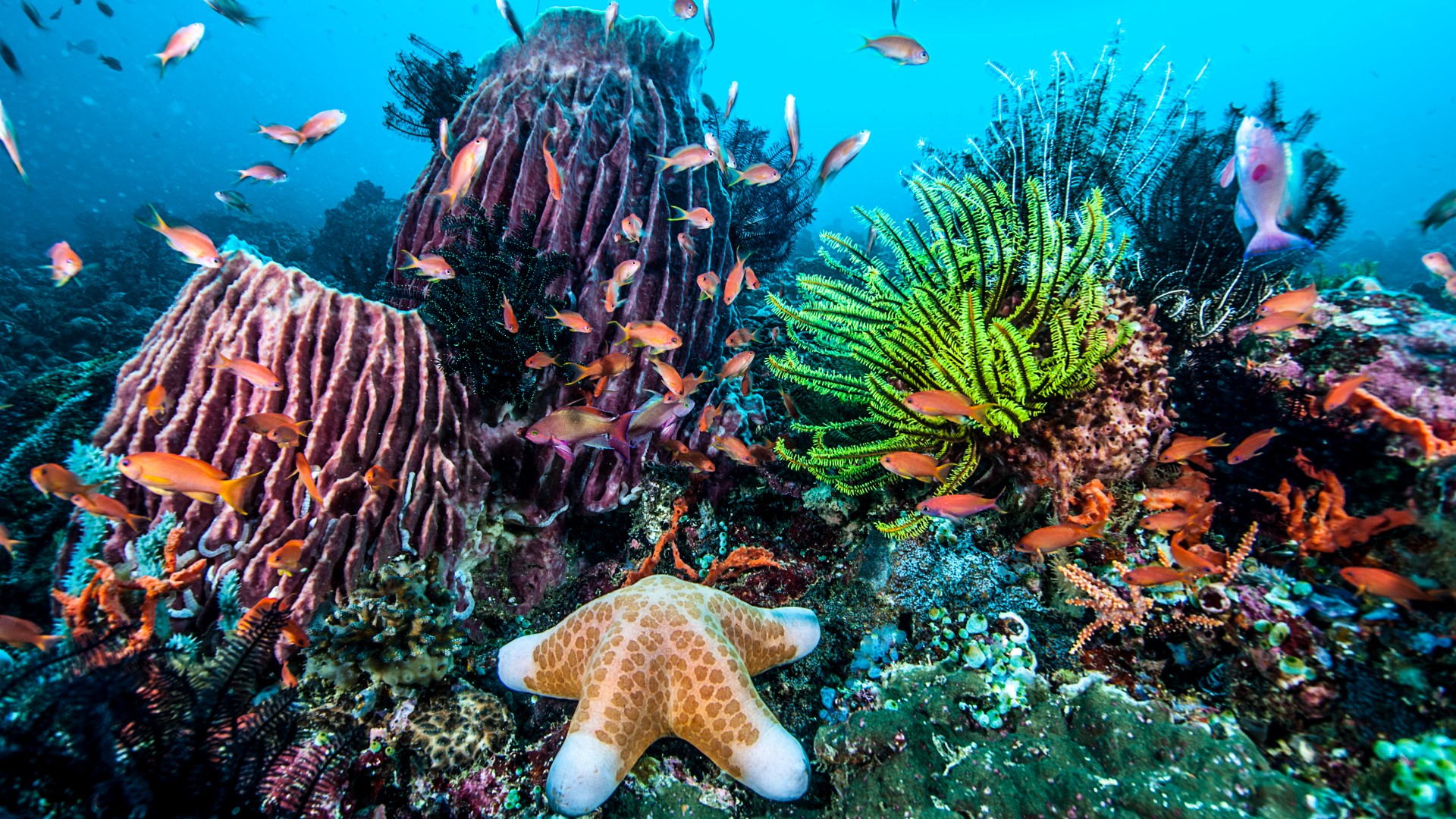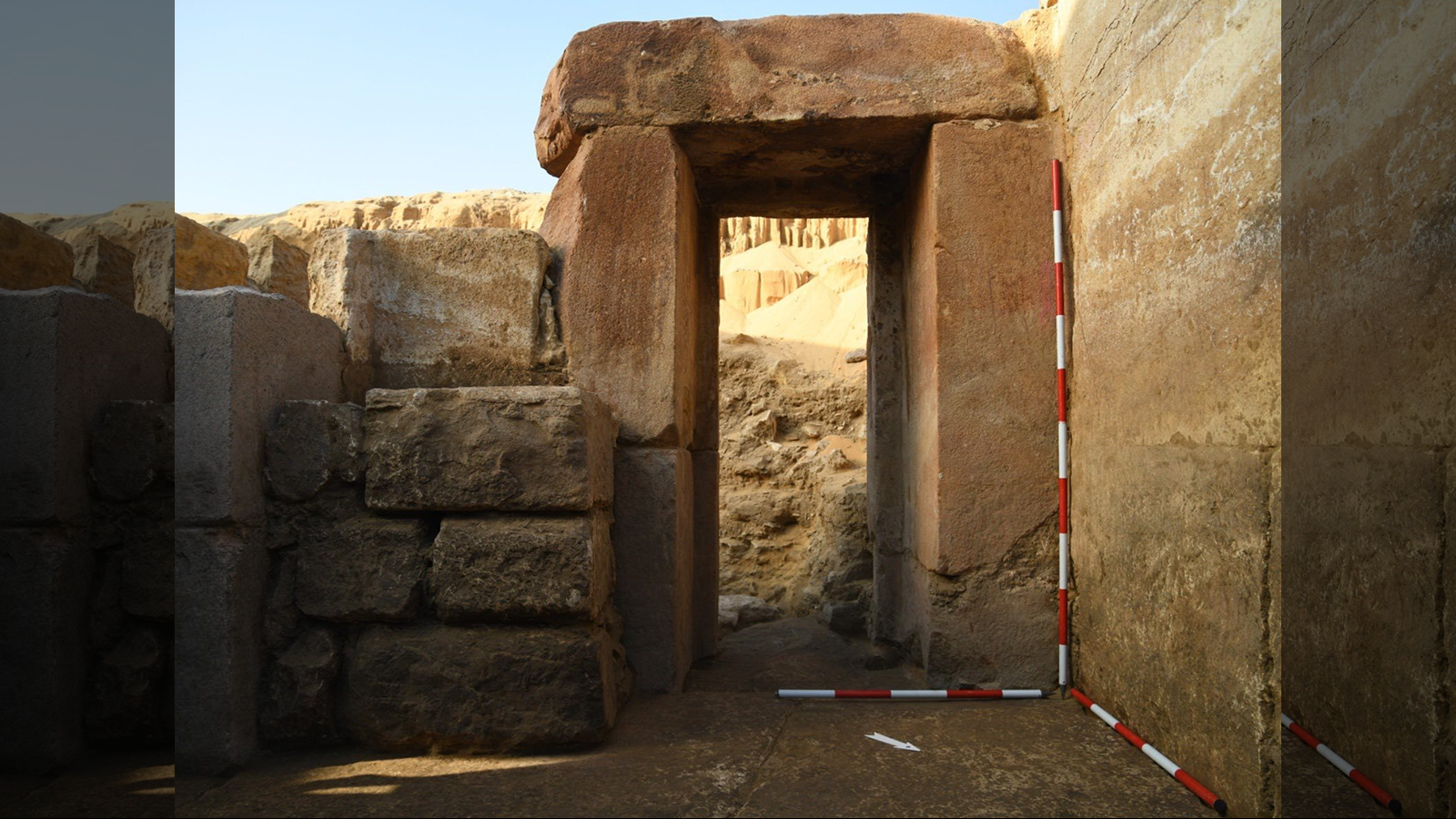Hidden 36 million-year-long cycles may fuel biodiversity on Earth, ancient rocks reveal
As tectonic plates clash and pull apart, sea levels change. This process has shaped marine biodiversity over time, a new study suggests.

The massive slabs of slowly-moving rock just under Earth's surface — known as tectonic plates — may drive bursts of marine biodiversity every 36 million years, a new study finds.
As tectonic plates slide over the mantle, Earth's inner rocky layer above the core, they cause sea levels to rise and fall. In turn, fluctuating sea levels around continents and shallow inland seas provide new habitats for ocean life to thrive, the researchers found.
"Warm, shallow water environments are the primary cradles of marine biodiversity," study co-author Dietmar Müller, a geophysics professor at the University of Sydney, told Live Science.
This cyclical flooding and drying up of continents goes back at least 250 million years, the researchers wrote in the study, published Monday (July 10) in the journal PNAS.
The slow ballet of tectonic plates explains the creation of these prolific habitats. In areas called mid-ocean ridges, where movement in the Earth's mantle pushes plates away from each other, hot magma and water rises to form new oceanic crust — a process known as seafloor spreading. In other areas, these tectonic plates collide, with one sliding beneath the other through a process called subduction, pulling ocean water into the Earth's mantle, a process that lowers sea levels. The pace of these events can change the elevations of the ocean floor and, consequently, sea-level rise, according to Müller.
"When there's a lot of new seafloor created and destroyed, that's when you get sea-level highs," he said. "And when the system slows down … you get sea-level lows."
Related: Hunks of oceanic crust are wedged inside Earth's mantle
Get the world’s most fascinating discoveries delivered straight to your inbox.
When sea levels rise and coastlines are flooded, this can create pockets of shallow seas, which may eventually give rise to new species that are uniquely suited to these newly formed habitats, the researchers found. During the study, the researchers compared plate tectonic movements and sea-level changes with marine fossil records dating back 250 million years ago, which they largely pulled from the Paleobiology Database, a public resource that combines data for fossils collected across geological history.
Their analysis revealed that tectonic changes that drove shallower sea levels in and around continents every 36 million years correlated with highly biodiverse periods in the fossil record roughly 6 million to 8 million years later. Essentially, when sea level rise peaked, it led to a peak in marine biodiversity.
"There's essentially periods where mid-ocean ridges go faster and subduction goes faster, and they're followed by periods when the system slows down," Müller said. "Why exactly this process is cyclic like that is actually a question that we haven't fully answered yet."
The new research provides growing evidence that global sea level change fueled by Earth's geological processes have largely influenced the biodiversity of marine life over history, the study's authors say.
The study highlights how tapping into massive amounts of data within the Paleontology Database can be a "game changer in its own right," Gareth Roberts, a senior lecturer in Earth Sciences at Imperial College London, told Live Science. He added that the study is "another foundation stone to understanding how marine fossil diversities changed through time."
According to the cycle, the Earth is currently at a sea-level low and marine biodiversity low, if we were factoring in only tectonic-driven changes, Müller said. However, shifting tectonic plates aren't the only thing that can change sea levels and, as a result, the ocean's biodiversity. Human-caused climate change is heating up ocean temperatures and melting ice sheets, contributing to a global rise in sea levels, research shows. This means sea-level rise and coastal flooding could happen much faster than previously observed in the 36 million-year cycle, according to Müller.
"What we're talking about is not an alternative mechanism to explain global warming," he said, adding that the rate of sea-level rise documented in their study is relatively slow. "[The rates] at which we are changing the climate and the surface environments now are faster than ever in the geological record."

Kiley Price is a former Live Science staff writer based in New York City. Her work has appeared in National Geographic, Slate, Mongabay and more. She holds a bachelor's degree from Wake Forest University, where she studied biology and journalism, and has a master's degree from New York University's Science, Health and Environmental Reporting Program.



